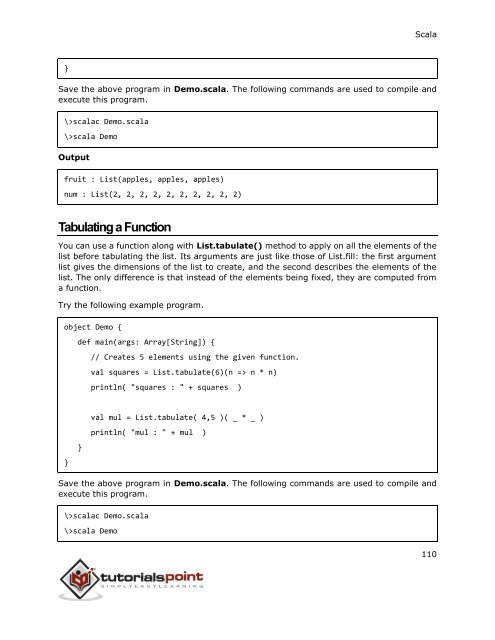Create successful ePaper yourself
Turn your PDF publications into a flip-book with our unique Google optimized e-Paper software.
Scala<br />
}<br />
Save the above program in Demo.<strong>scala</strong>. The following commands are used to compile and<br />
execute this program.<br />
\><strong>scala</strong>c Demo.<strong>scala</strong><br />
\><strong>scala</strong> Demo<br />
Output<br />
fruit : List(apples, apples, apples)<br />
num : List(2, 2, 2, 2, 2, 2, 2, 2, 2, 2)<br />
Tabulating a Function<br />
You can use a function along with List.tabulate() method to apply on all the elements of the<br />
list before tabulating the list. Its arguments are just like those of List.fill: the first argument<br />
list gives the dimensions of the list to create, and the second describes the elements of the<br />
list. The only difference is that instead of the elements being fixed, they are computed from<br />
a function.<br />
Try the following example program.<br />
object Demo {<br />
def main(args: Array[String]) {<br />
// Creates 5 elements using the given function.<br />
val squares = List.tabulate(6)(n => n * n)<br />
println( "squares : " + squares )<br />
}<br />
}<br />
val mul = List.tabulate( 4,5 )( _ * _ )<br />
println( "mul : " + mul )<br />
Save the above program in Demo.<strong>scala</strong>. The following commands are used to compile and<br />
execute this program.<br />
\><strong>scala</strong>c Demo.<strong>scala</strong><br />
\><strong>scala</strong> Demo<br />
110


